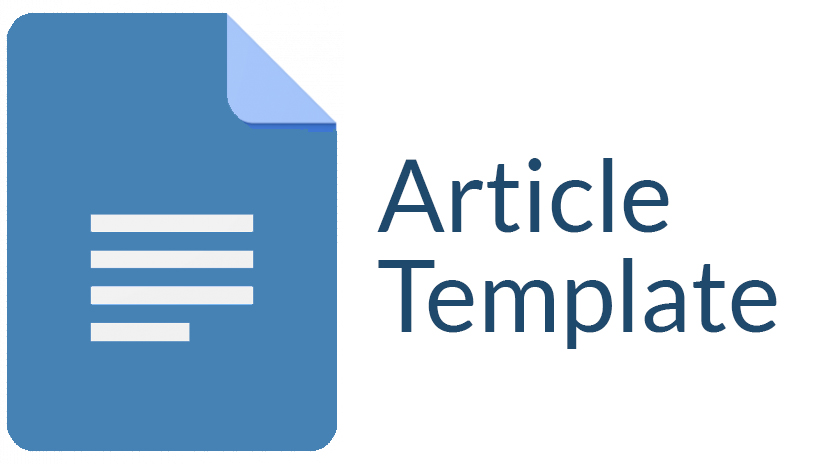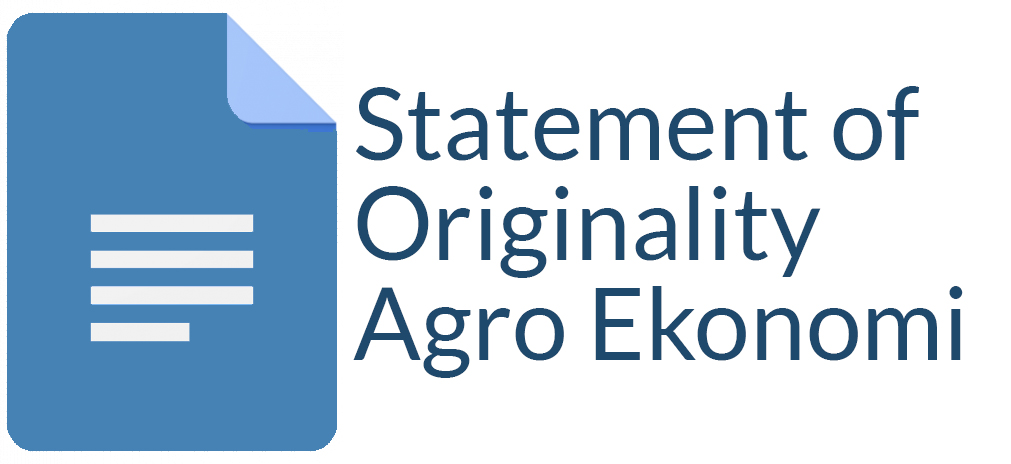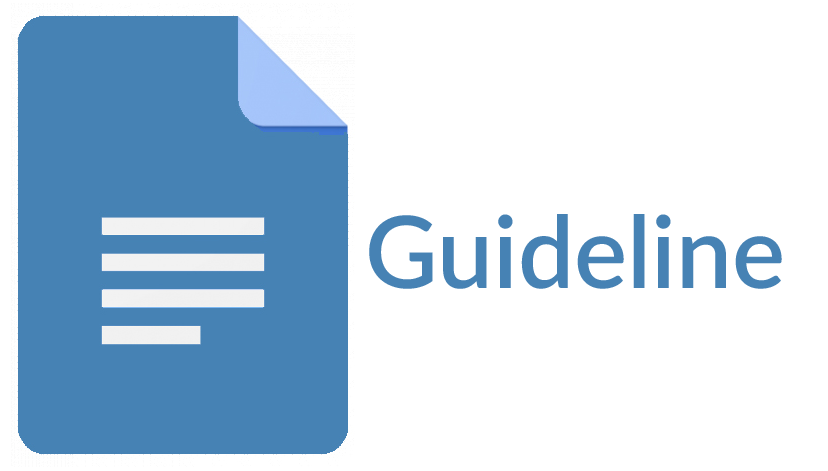Characteristics of Coastal Farmers in Kulon Progo Regency
Yuhan Farah Maulida(1*), Subejo Subejo(2)
(1) Department of Agricultural Socio-economics, Universitas Gadjah Mada
(2) Department of Agricultural Socio-economics, Universitas Gadjah Mada
(*) Corresponding Author
Abstract
The study explored the characteristics of coastal farmers in Kulon Progo Regency. It emphasized the issues of the socio-economical arrangements of farmers in marginal and resource-poor area and the access of farmers to productive capital. The research will contribute to development practitioners and policymakers in prescribing the context-specific policies and programs. In doing so, the research aimed at exploring the characteristics of coastal farmers in aspects like age, educational level, farming experiences and monthly income, as well as uncover their access to productive capital. The data came from a survey carried out using a questionnaire-based field interview, which adopted and used a simple random sampling method to select 60 respondents. The result of this research showed that the average age of coastal farmers is 43.2 years. In majority, farmers went to school for 10-12 years or were graduated from high school. Besides, 86.53% of the farmers had more than 10-year experience, which indicated that farming in coastal areas was profitable. The average monthly income of coastal farmers was 6 million rupiahs during peak season. Chili, the most profitable crop, contributed as the primary source of income, mostly when the selling price was high. Access to land, livestock, transportation (motorbike), extension services, internet and informal institution were considered high and very high, while access to four-wheeled transportation, credit and formal institution (farmers’ group) were medium and low.
Keywords
Full Text:
PDFReferences
Bellon, M. R., Kotu, B. H., Azzarri, C., & Caracciolo, F. (2020). To diversify or not to diversify, that is the question. Pursuing agricultural development for smallholder farmers in marginal areas of Ghana. World Development, 125(104682), 1–10. https://doi.org/10.1016/j.worlddev.2019.104682
BPS. (2018). Agriculture Survey Between Census (Hasil Survei Pertanian Antar Sensus). https://www.bps.go.id/publication/2019/01/02/c7cb1c0a1db444e2cc726708/hasil-survei-pertanian-antar-sensus--sutas--2018.html
Cofré-Bravo, G., Klerkx, L., & Engler, A. (2019). Combinations of bonding, bridging, and linking social capital for farm innovation: How farmers configure different support networks. Journal of Rural Studies, 69(July 2018), 53–64. https://doi.org/10.1016/j.jrurstud.2019.04.004
Decree of Governor of Yogyakarta Special Region on Determination of Minimum Wage in Distict/City No 320/KEP/2018. (2018). http://jdih.jogjaprov.go.id/produk_hukum_preview.php?id=14315
IFAD. (2016). Republic of Indonesia: Country strategic opportunities programme (Issue September). http://www.ifad.org/operations/policy/cosop.htm#i
Javed, Z. H., Khilji, B. A., & Mujahid, M. (2008). Impact of Education on Socio-economic Status of Villagers Life: A Case Study of Shrien Wala Village of Faisalabad District. Pakistan Economic and Social Review, 46(2), 133–146. http://ovidsp.ovid.com/ovidweb.cgi?T=JS&CSC=Y&NEWS=N&PAGE=fulltext&D=econ&AN=1049134
Kukrety, N., & Mohanty, S. (2011). Putting gender equality at the heart of social protection: Lessons from oxfam gb’s experience with safety net programming. Gender and Development, 19(2), 271–281. https://doi.org/10.1080/13552074.2011.592638
Mariyono, J. (2019). Farmer training to simultaneously increase productivity of soybean and rice in Indonesia. International Journal of Productivity and Performance Management, 68(6), 1120–1140. https://doi.org/10.1108/IJPPM-10-2018-0367
May, D., Arancibia, S., Behrendt, K., & Adams, J. (2019). Preventing young farmers from leaving the farm: Investigating the effectiveness of the young farmer payment using a behavioural approach. Land Use Policy, 82, 317–327. https://doi.org/10.1016/j.landusepol.2018.12.019
Mulder, K., Costanza, R., & Erickson, J. (2006). The contribution of built, human, social and natural capital to quality of life in intentional and unintentional communities. Ecological Economics, 59(1), 13–23. https://doi.org/10.1016/j.ecolecon.2005.09.021
Neuman, L. (2009). Social Research Methods: Qualitative and Quantitative Approaches (7th ed.). Pearson.
Okten, C., & Osili, U. O. (2004). Social networks and credit access in Indonesia. World Development, 32(7), 1225–1246. https://doi.org/10.1016/j.worlddev.2004.01.012
Decree of Governor of Yogyakarta Special Region on Determination of Minimum Wage in Distict/City, Pub. L. No. No 320/KEP/2018, 4 (2018). http://jdih.jogjaprov.go.id/produk_hukum_preview.php?id=14315
Ribot, J. C., & Peluso, N. L. (2003). A Theory of Access. Rural Sociology, 68(2), 153–181.
Rigg, J., Phongsiri, M., Promphakping, B., Salamanca, A., & Sripun, M. (2020). Who will tend the farm? Interrogating the ageing Asian farmer. Journal of Peasant Studies, 47(2), 306–325. https://doi.org/10.1080/03066150.2019.1572605
Roitman, S. (2016). Dynamics and Resilience of Informal Areas. Dynamics and Resilience of Informal Areas, 187–210. https://doi.org/10.1007/978-3-319-29948-8
Statistics of Kulon Progo Regency. (2020). Kulon Progo Regency in Figures.
Subejo, & Mewasdinta, G. (2019). Historical Analysis on Tropical Fruit Production at Coastal Sandy Farming Land in Rural Yogyakarta, Indonesia. KnE Life Sciences, 4(11), 315. https://doi.org/10.18502/kls.v4i11.3877
Subejo, Untari, D. W., Wati, R. I., & Mewasdinta, G. (2019). Modernization of agriculture and use of information and communication technologies by farmers in coastal Yogyakarta. Indonesian Journal of Geography, 51(3), 332–345. https://doi.org/10.22146/ijg.41706
Supriyanto. (2013). Adaptation Strategy for Climate Change in Coastal Area of Yogyakarta. Pintal Publishing.
Welker, M. (2012). The Green Revolution’s ghost: Unruly subjects of participatory development in rural Indonesia. American Ethnologist, 39(2), 389–406. https://doi.org/10.1111/j.1548-1425.2012.01371.x
Article Metrics
Refbacks
- There are currently no refbacks.
Copyright (c) 2018 Agro Ekonomi

This work is licensed under a Creative Commons Attribution-ShareAlike 4.0 International License.
View My Stats











